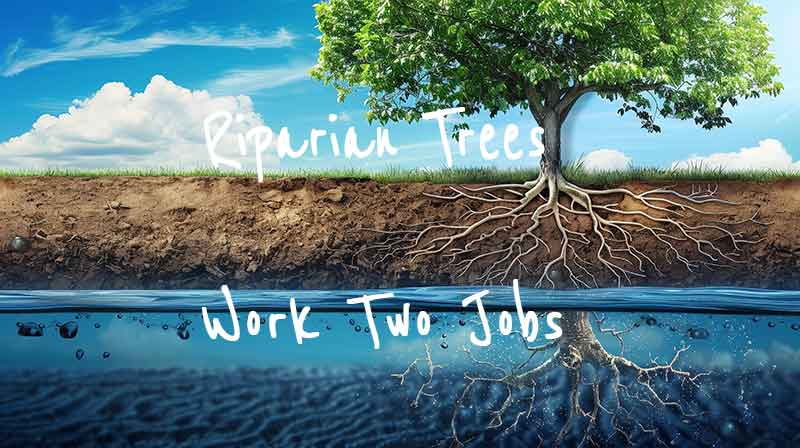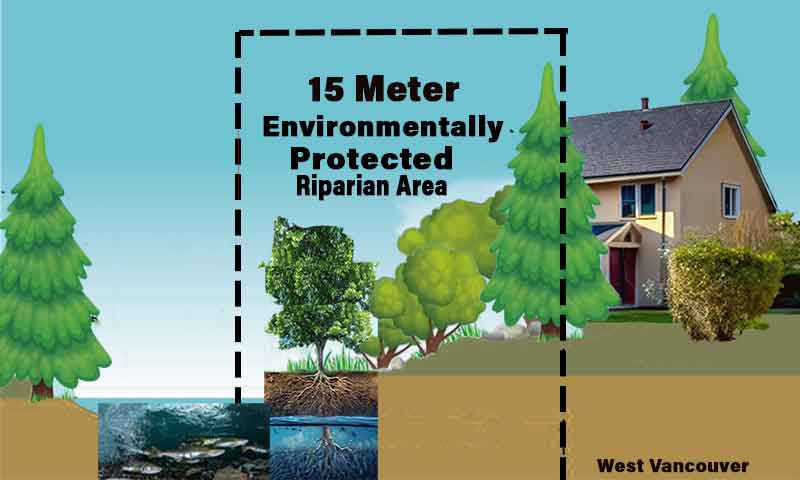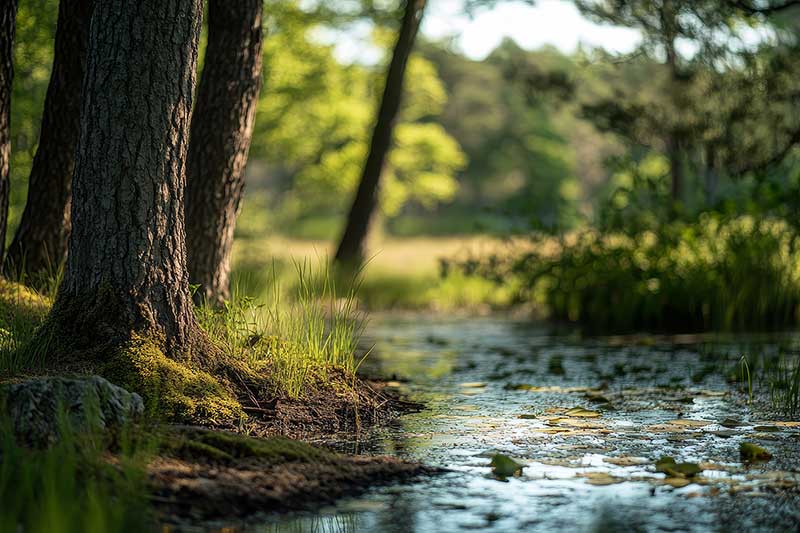Riparian Trees Work Two Jobs

What is a riparian area? Excellent video from the Pacific “Northwest Treaty Tribes” and textual description from the BC Government.
“Riparian areas link water to land.
They border [all of West Vancouver’s creeks] streams, lakes, and wetlands.
The blend of streambed, water, trees, shrubs and grasses in a riparian area provides fish habitat, and directly influences it.
Protecting riparian areas, while facilitating urban development that embraces high standards of environmental stewardship, is a priority for the Government of British Columbia.
Good quality streamside habitat is essential for ensuring healthy fish populations.”
Government of British Columbia, Riparian Protections Regulation (2022)

Image: Estimations for Illustration Purposes; Applicable to West Vancouver (Some bush, soil illustrations from Watershed Project
First Job: All trees and vegetation:
“Lower surface and air temperatures by
providing shade and cooling through evapotranspiration;
Reduced energy use and
lower greenhouse gas emissions;
Improved air quality;
Enhanced stormwater management and
water quality;
Improved Quality of Life, and Wildlife Habitat
among other benefits.”
US Envrionmental Protection Agency
Second Job of Riparian Trees:

